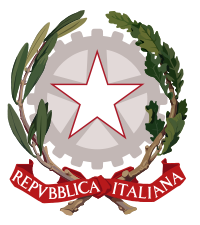Provinces of Italy
In Italy, a province (in Italian: provincia) is an administrative division of intermediate level between municipality (comune) and region (regione).
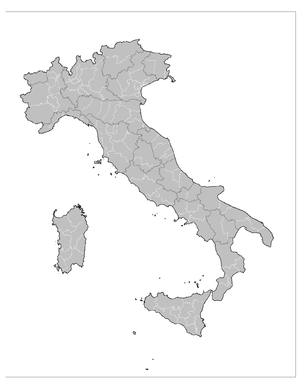 |
|
A province is composed of many municipalities, and usually several provinces form a region. The region of Aosta Valley is the only one that, strictly speaking, has no provinces: the administrative functions of its province are provided by the corresponding regional government; however, loosely speaking, it is seen as a single province.
The three main functions devolved to provinces are:
- Local planning and zoning
- Provision of local police and fire services.
- Transportation regulation (Car registration, maintenance of local roads...)
The number of provinces in Italy has been steadily growing in recent years, as many new ones are carved out of older ones, sometimes being limited to less than a hundred thousands inhabitants per province (a smaller population than several comuni). There are 109 provinces in Italy. Aosta Valley is the only region without a province. Lombardy has the most provinces, with 12. The list below highlights in bold the province whose administrative capital is also the administrative capital of its region. Note that ISO 3166-2:IT lists all two-letter codes for the provinces.
Each province is headed by a President assisted by a representative body, the Provincial Council, and an executive body, the Provincial Executive. President and members of Council are elected together by resident citizens: the coalition of the elected President (who needs an absolute majority in the first or second round of voting) gains the three fifths of the Council's seats. The Executive is chaired by President who appoint others members, called assessori.
In each province there is also a Prefect (prefetto), a representative of central government who heads an agency called prefettura-ufficio territoriale del governo. Questor (questore) is the head of State's Police (Polizia di Stato) in province and his office is called questura. There is also a province's police force depending from local government, called Polizia Provinciale (Provincial Police).
The province of Bolzano-Bozen and the province of Trento are a case sui generis. They are autonomous provinces: unlike all other Italian provinces they have the legislative powers of regions and are not subordinated to the region they are part of, namely Trentino-Alto Adige/Südtirol.
The provinces are listed below alphabetically, by region:
Abruzzo Region

- Chieti (CH)
- L'Aquila (AQ)
- Pescara (PE)
- Teramo (TE)
Apulia Region (Puglia)
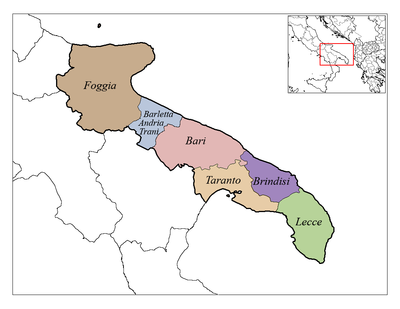
Basilicata Region

- Matera (MT)
- Potenza (PZ)
Calabria Region
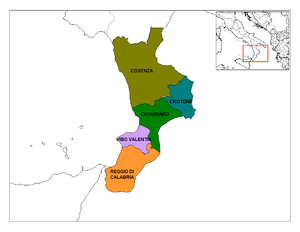
- Catanzaro (CZ)
- Cosenza (CS)
- Crotone (KR)
- Reggio Calabria (RC)
- Vibo Valentia (VV)
Campania Region
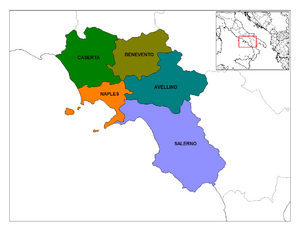
- Avellino (AV)
- Benevento (BN)
- Caserta (CE)
- Naples (Napoli) (NA)
- Salerno (SA)
Emilia-Romagna Region
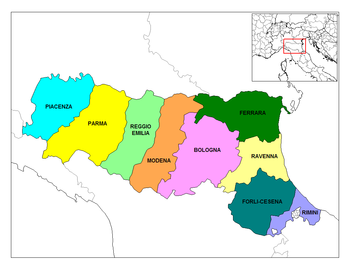
- Bologna (BO)
- Ferrara (FE)
- Forlì-Cesena (FC)
- Modena (MO)
- Parma (PR)
- Piacenza (PC)
- Ravenna (RA)
- Reggio Emilia (RE)
- Rimini (RN)
Friuli-Venezia Giulia Region
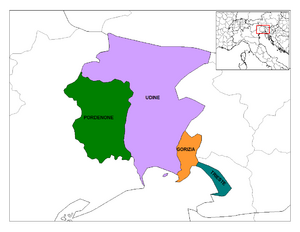
- Gorizia (GO)
- Pordenone (PN)
- Trieste (TS)
- Udine (UD)
Lazio Region

- Frosinone (FR)
- Latina (LT)
- Rieti (RI)
- Rome (Roma) (RM)
- Viterbo (VT)
Liguria Region
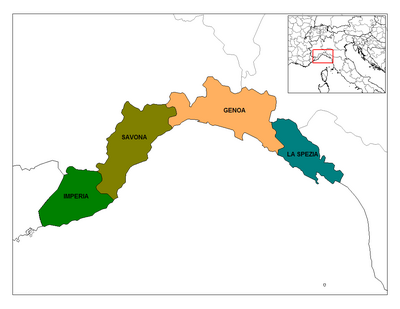
- Genoa (Genova) (GE)
- Imperia (IM)
- La Spezia (SP)
- Savona (SV)
Lombardy Region (Lombardia)

- Bergamo (BG)
- Brescia (BS)
- Como (CO)
- Cremona (CR)
- Lecco (LC)
- Lodi (LO)
- Mantua (Mantova) (MN)
- Milan (Milano) (MI)
- Monza and Brianza (MB)
- Pavia (PV)
- Sondrio (SO)
- Varese (VA)
Marche Region
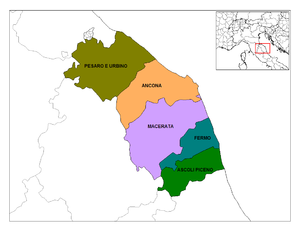
- Ancona (AN)
- Ascoli Piceno (AP)
- Fermo (FM)
- Macerata (MC)
- Pesaro and Urbino (PU)
Molise Region
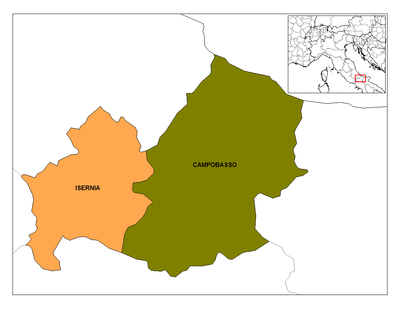
- Campobasso (CB)
- Isernia (IS)
Piedmont Region (Piemonte)
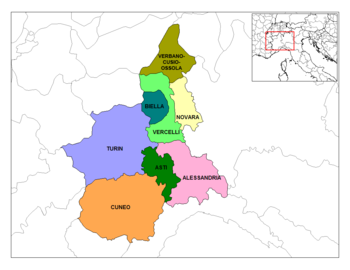
- Alessandria (AL)
- Asti (AT)
- Biella (BI)
- Cuneo (CN)
- Novara (NO)
- Turin (Torino) (TO)
- Verbano-Cusio-Ossola (VB)
- Vercelli (VC)
Sardinia Region (Sardegna)
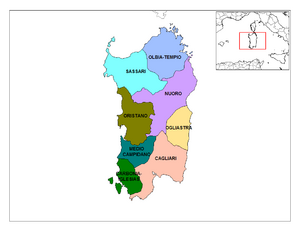
- Cagliari (CA)
- Carbonia-Iglesias (CI)
- Medio Campidano (VS)
- Nuoro (NU)
- Ogliastra (OG)
- Olbia-Tempio (OT)
- Oristano (OR)
- Sassari (SS)
Sicily Region (Sicilia)

- Agrigento (AG)
- Caltanissetta (CL)
- Catania (CT)
- Enna (EN)
- Messina (ME)
- Palermo (PA)
- Ragusa (RG)
- Syracuse (Siracusa) (SR)
- Trapani (TP)
Trentino-Alto Adige/Südtirol Region

- Bolzano-Bozen (Alto Adige/Südtirol) (BZ)
- Trento (Trentino) (TN)
Tuscany Region (Toscana)
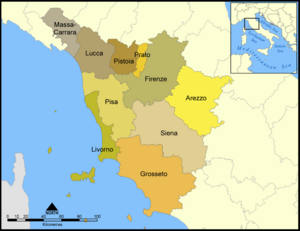
- Arezzo (AR)
- Florence (Firenze) (FI)
- Grosseto (GR)
- Leghorn (Livorno) (LI)
- Lucca (LU)
- Massa-Carrara (MS)
- Pisa (PI)
- Pistoia (PT)
- Prato (PO)
- Siena (SI)
Umbria Region

- Perugia (PG)
- Terni (TR)
Veneto Region
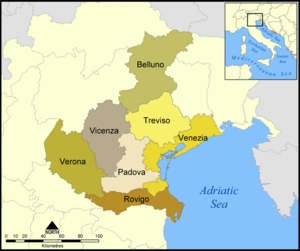
- Belluno (BL)
- Padua (Padova) (PD)
- Rovigo (RO)
- Treviso (TV)
- Venice (Venezia) (VE)
- Verona (VR)
- Vicenza (VI)
See also
- Regions of Italy
- ISO 3166-2:IT
|
||||||||
